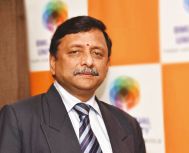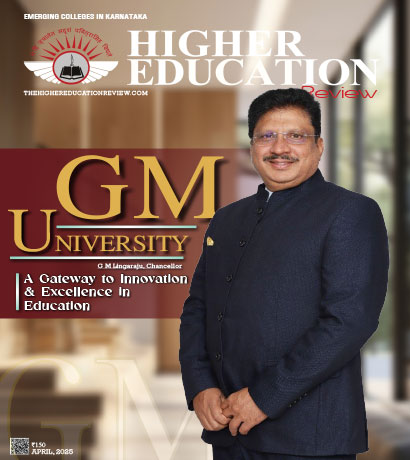The Evolving Higher Education Scenario in India

Prof B S Satyanarayana, Vice Chancellor BML Munjal University
In the era of knowledge economy, the whole world is once again looking at India on account of both its demographic dividend and ability to innovate and adopt in an affordable manner. This clearly evolves from India's ancient culture and heritage, which always placed education at an exalted position. This has been based on innovative and progressive ethos, as seen from one of the Mahavakyas based on Aitareya Upanishad of Rig-Veda, which says 'Prajnanam Brahma' or 'Knowledge is supreme'. This has been authenticated by writings of many ancient international scholars who travelled to India. Thus ancient Indian universities like Taxila or Takshashila and Nalanda were truly international with student and faculty from across the globe. The education was characterised by interdisciplinary or multidisciplinary learning, and pedagogy based on Tarka or Socratic dialogue and exploration of evolving disciplines. The whole education process was based on the 'Guru- Shishya Parampara' and near one-on-one mentoring in a residential atmosphere. There were no restrictions on anyone coming to a guru for education and they never charged anything from the students. The students paid what they could afford or worked in the house of the gurus, till they completed their education.
High-quality pedagogy is not restricted to a particular country, as skilled professionals move from one economic region to another; they create more jobs and business opportunities in their wake
Indian Higher education system did have a decent impetus immediately after the independence when in the first two decades great emphasis was laid on quality higher education and many good institutions were established. However, the subsequent two decades saw a gradual fall in standards of education and loss of steam due to multiple reasons. Again, from the 10th Five Year Plan (FYP) period, the nation saw some rapid expansion of professional education system, with one of the largest increase in allocation for Higher Education in the 11th FYP. The 12th FYP envisaged achieving Expansion, Equity, Employability and Excellence, as the 4 'E' in education by its culmination period. The country today has roughly achieved Expansion and Equity to a great extent. Close to 40 million students are studying in around 40, 000 institutions.
If one were to link all the formal, informal and continuing education process, leading to some form training/skilling leading to employability after schooling, this number could be close to 70 million. The same is expected to reach 300 million in two decades on account of our demographic dividend.
The knowledge era clearly calls for education/skill enabled employability and updating skills for existing employees to adopt to the rapidly evolving changes in the society, economy, and disruptive technology mandated changes in businesses and industries. High-quality pedagogy is not restricted to a particular country, as skilled professionals move from one economic region to another; they create more jobs and business opportunities in their wake. A recent PwC report analysed that India will be the second-largest economy in the world by 2050 according to GDP measured via Purchasing Power Parity (PPP), and the third largest economy when measuring GDP via Market Exchange Rates (or MERs).
Therefore as India moves to become a global leader with the largest population of youth or the youngest nation in terms of its average age of the population, India needs to accelerate its capability to deliver Higher Education in the coming decade. In spite of the current quality and employability issues and seemingly over capacity in Higher Education, the nation hardly has 20 to 25 percent capacity to meet the needs of the expected 300 million students in the next two decades. Hence there is an urgent need for both government and private promoters in the field of education and skill development to meet the challenges that will soon arise. Some of the problems that plague the sector currently and require immediate attention in the face of globalization include:
- Acute shortage of quality faculty and their skilling
- Adequate funds for removal of technological obsolescence in the teaching labs,
- Funds of advanced research,
- Entrepreneurship,
- Skill development,
- Incorporation of industry relevant in curriculum and
- Industry academic collaborative efforts towards product and process relevant to India and the world
The government on its part has worked hard to become a member of the Washington Accord in 2014 to get recognition for Indian Outcome-Based Education (OBE) Accreditation at par with the developed countries. Further to enable Indian institutions to be trained and prepared for applying for the international ranking process, MHRD has also introduced the NIRF ranking for Indian Universities and Institution. Further, the Government of India enacted the UGC (World Class Institutions Deemed to be Universities) Regulations, 2016, as a new framework for the creation of 20 institutions (10 public and 10 private), to work towards the creation of global institutions of repute in India. These institutions would be free from constraints of regulations from nay compliance agency over 15 years and can offer both conventional courses, diverse newer and evolving disciplines, as well as offer specialisations based multi-disciplinary, multi-skilled and cross-functional capabilities, with a huge emphasis on experiential learning and industry-academic and national & international collaboration.
Further education is no more chalk and talks, in the digital era, it is increasingly active learning including flipped classrooms, blended classrooms, leveraging MOOCs, wide range of digital content, a flexible approach to personal and collaborative learning, bringing in the philosophy of individualised pedagogy and lifelong learning. More importantly, it calls for active collaboration among institutions national and international and with the industries. Share the best of practices and also resources be it a physical and human resource. Thus revolutionise the higher education landscape by integrating hands-on and cross-disciplinary learning. More importantly look beyond employability, in terms of fuelling the passion and imagination of the millennials towards innovation and entrepreneurship, with a special emphasis on sustainable and inclusive innovation for 'Make in India'.
Dr. Satyanarayan, Vice Chancellor
Dr. Satyanarayan holds a Ph.D in Electrical Engg in the area of Vacuum Nanoelectronics from Cambridge University UK. He has a unique understanding of the research and development ecosystem in India and overseas. He is currently the Vice Chancellor of BML Munjal University.
High-quality pedagogy is not restricted to a particular country, as skilled professionals move from one economic region to another; they create more jobs and business opportunities in their wake
Indian Higher education system did have a decent impetus immediately after the independence when in the first two decades great emphasis was laid on quality higher education and many good institutions were established. However, the subsequent two decades saw a gradual fall in standards of education and loss of steam due to multiple reasons. Again, from the 10th Five Year Plan (FYP) period, the nation saw some rapid expansion of professional education system, with one of the largest increase in allocation for Higher Education in the 11th FYP. The 12th FYP envisaged achieving Expansion, Equity, Employability and Excellence, as the 4 'E' in education by its culmination period. The country today has roughly achieved Expansion and Equity to a great extent. Close to 40 million students are studying in around 40, 000 institutions.
If one were to link all the formal, informal and continuing education process, leading to some form training/skilling leading to employability after schooling, this number could be close to 70 million. The same is expected to reach 300 million in two decades on account of our demographic dividend.
The knowledge era clearly calls for education/skill enabled employability and updating skills for existing employees to adopt to the rapidly evolving changes in the society, economy, and disruptive technology mandated changes in businesses and industries. High-quality pedagogy is not restricted to a particular country, as skilled professionals move from one economic region to another; they create more jobs and business opportunities in their wake. A recent PwC report analysed that India will be the second-largest economy in the world by 2050 according to GDP measured via Purchasing Power Parity (PPP), and the third largest economy when measuring GDP via Market Exchange Rates (or MERs).
Therefore as India moves to become a global leader with the largest population of youth or the youngest nation in terms of its average age of the population, India needs to accelerate its capability to deliver Higher Education in the coming decade. In spite of the current quality and employability issues and seemingly over capacity in Higher Education, the nation hardly has 20 to 25 percent capacity to meet the needs of the expected 300 million students in the next two decades. Hence there is an urgent need for both government and private promoters in the field of education and skill development to meet the challenges that will soon arise. Some of the problems that plague the sector currently and require immediate attention in the face of globalization include:
- Acute shortage of quality faculty and their skilling
- Adequate funds for removal of technological obsolescence in the teaching labs,
- Funds of advanced research,
- Entrepreneurship,
- Skill development,
- Incorporation of industry relevant in curriculum and
- Industry academic collaborative efforts towards product and process relevant to India and the world
The government on its part has worked hard to become a member of the Washington Accord in 2014 to get recognition for Indian Outcome-Based Education (OBE) Accreditation at par with the developed countries. Further to enable Indian institutions to be trained and prepared for applying for the international ranking process, MHRD has also introduced the NIRF ranking for Indian Universities and Institution. Further, the Government of India enacted the UGC (World Class Institutions Deemed to be Universities) Regulations, 2016, as a new framework for the creation of 20 institutions (10 public and 10 private), to work towards the creation of global institutions of repute in India. These institutions would be free from constraints of regulations from nay compliance agency over 15 years and can offer both conventional courses, diverse newer and evolving disciplines, as well as offer specialisations based multi-disciplinary, multi-skilled and cross-functional capabilities, with a huge emphasis on experiential learning and industry-academic and national & international collaboration.
Further education is no more chalk and talks, in the digital era, it is increasingly active learning including flipped classrooms, blended classrooms, leveraging MOOCs, wide range of digital content, a flexible approach to personal and collaborative learning, bringing in the philosophy of individualised pedagogy and lifelong learning. More importantly, it calls for active collaboration among institutions national and international and with the industries. Share the best of practices and also resources be it a physical and human resource. Thus revolutionise the higher education landscape by integrating hands-on and cross-disciplinary learning. More importantly look beyond employability, in terms of fuelling the passion and imagination of the millennials towards innovation and entrepreneurship, with a special emphasis on sustainable and inclusive innovation for 'Make in India'.
Dr. Satyanarayan, Vice Chancellor
Dr. Satyanarayan holds a Ph.D in Electrical Engg in the area of Vacuum Nanoelectronics from Cambridge University UK. He has a unique understanding of the research and development ecosystem in India and overseas. He is currently the Vice Chancellor of BML Munjal University.

